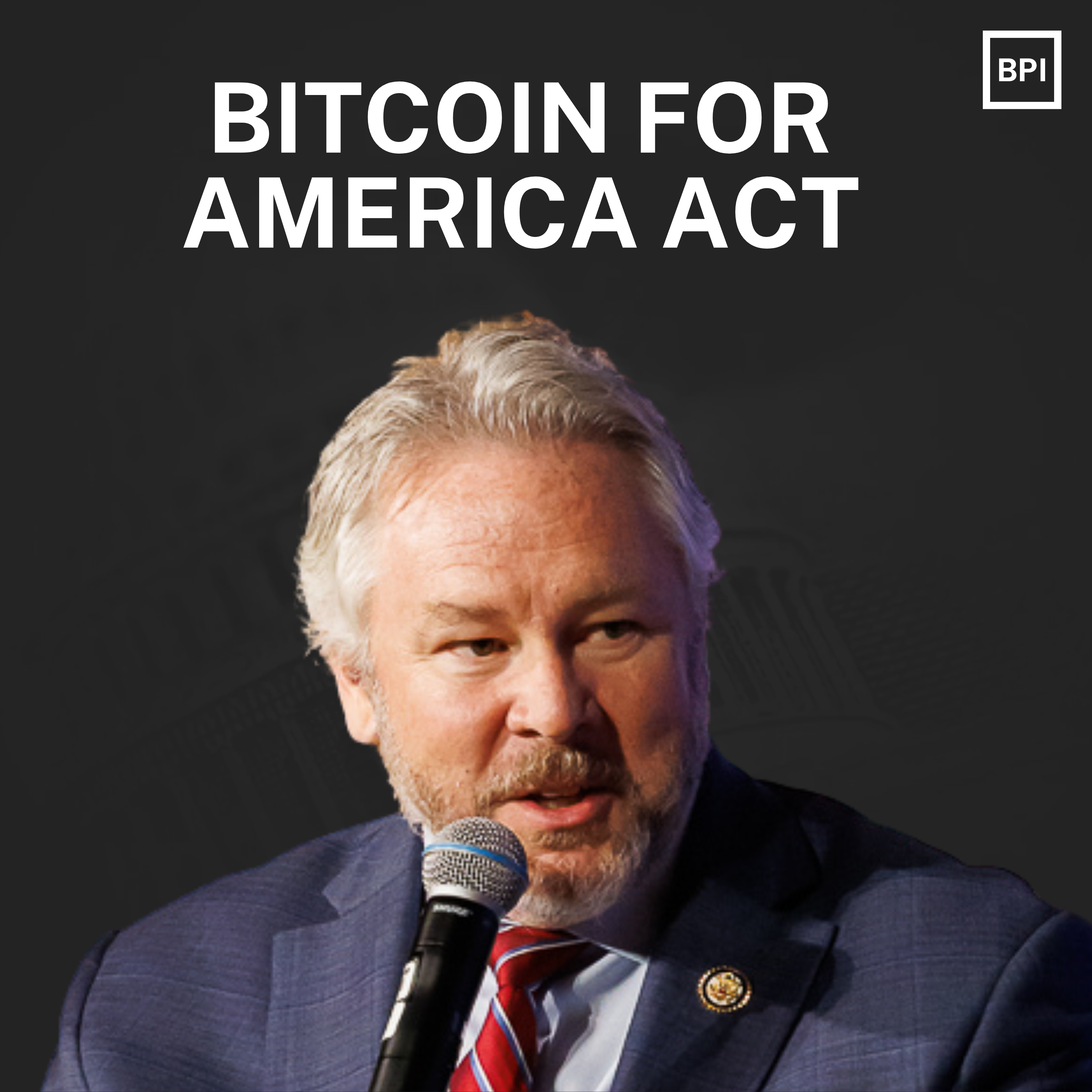Why Bitcoin? Part 3: Minimizing Trust by Eliminating Middlemen
This series, adapted from Resistance Money, uncovers Bitcoin’s anti-authoritarian roots, contrasts it with other digital money, and shows how it makes good on the dream — not of digital money, but digital cash — by doing away with monetary middlemen.

Traditional cash doesn’t require users to trust managers and mediators. You can custody your own cash and transact without intermediaries. By being your own manager and mediator, you can enhance your financial privacy and freedom. But cash is subject to maker trust. Someone has to print those bills. We trust them to print enough – but not too much – and with effective anti-counterfeiting measures.
Whereas traditional digital money requires trust in managers, mediators, and makers, and physical cash requires trust in makers alone, Bitcoin requires trust in none. Or more cautiously, it was created to require trust in none. Here’s how Satoshi Nakamoto, the pseudonymous creator of Bitcoin, puts it:
I’ve developed a new open source P2P [peer-to-peer] e-cash system called Bitcoin. It’s completely decentralized, with no central server or trusted parties, because everything is based on crypto proof instead of trust . . .
The root problem with conventional currency is all the trust that’s required to make it work. The central bank must be trusted not to debase the currency, but the history of fiat currencies is full of breaches of that trust. Banks must be trusted to hold our money and transfer it electronically, but they lend it out in waves of credit bubbles with barely a fraction in reserve. We have to trust them with our privacy, trust them not to let identity thieves drain our accounts. Their massive overhead costs make micropayments impossible.
A generation ago, multi-user time-sharing computer systems had a similar problem. Before strong encryption, users had to rely on password protection to secure their files, placing trust in the system administrator to keep their information private. Privacy could always be overridden by the admin based on his judgment call weighing the principle of privacy against other concerns, or at the behest of his superiors. Then strong encryption became available to the masses, and trust was no longer required. Data could be secured in a way that was physically impossible for others to access, no matter for what reason, no matter how good the excuse, no matter what.
It’s time we had the same thing for money. With e-currency based on cryptographic proof, without the need to trust a third party middleman, money can be secure and transactions effortless.
One of the fundamental building blocks for such a system is digital signatures. A digital coin contains the public key of its owner. To transfer it, the owner signs the coin together with the public key of the next owner. Anyone can check the signatures to verify the chain of ownership. It works well to secure ownership, but leaves one big problem unsolved: double-spending. Any owner could try to re-spend an already spent coin by signing it again to another owner. The usual solution is for a trusted company with a central database to check for double-spending, but that just gets back to the trust model. In its central position, the company can override the users, and the fees needed to support the company make micropayments impractical.
Bitcoin’s solution is to use a peer-to-peer network to check for double-spending. In a nutshell, the network works like a distributed timestamp server, stamping the first transaction to spend a coin. It takes advantage of the nature of information being easy to spread but hard to stifle . . .
The result is a distributed system with no single point of failure. Users hold the crypto keys to their own money and transact directly with each other, with the help of the P2P network to check for double-spending.
There’s a lot going on here, including some technical vocabulary (for the full explanation, read the book!). But even a cursory glance will give you a sense of what Bitcoin aspires to be: an electronic monetary system, with all the conveniences of modern money and without trusted parties – a system that enables peer-to-peer transfer, in other words. Or in two words: digital cash. The cypherpunk dream.
Does Bitcoin make good on that promise? Did the dream come true? These are questions we take up at length in our book. But for now, we’ll make a few observations about how Bitcoin’s design matches the digital cash ideal.
Recall the risks associated with trusted parties: privacy leaks, blocked transactions, leakage (high fees extracted by intermediating parties), and irresponsible creation or management of monetary assets.
The cypherpunks feared a dossier society, a future where corporations and governments have the proverbial manila folder on each of us. Each of our digital dossiers would include the details of everything we’ve ever bought – when, where, and for how much. Despite the cypherpunks’ warnings, we now live in a dossier society. When we sign up for credit cards or services like PayPal, we cough up our names and all sorts of personal information. Then everything we ever buy sticks to our real-life identities.
Trust – enabled by knowledge – is what makes the system work, and it goes both ways. To store your funds with a manager or transact using one or more mediators, you must register for an account and pass all manner of security or credit checks, visible and hidden. Your transactions are monitored and recorded, and each is attached to your name, your identity, and all the other information about you on file. Your passwords are on file, too, and these sometimes leak in unfortunate or even life-shattering ways.
Bitcoin, by contrast, requires no registration and collects no personal information. With little more than an internet-connected device, anyone can send or receive bitcoin to anyone else in the world. As with email, sending and receiving bitcoin requires both an address and a password. But unlike email, your Bitcoin address and its password are meaningless strings of symbols that bear no tell-tale connection to your real-life identity. Each serves as a pseudonym. You can use as many addresses as you like for as long as you like. Anyone who’d like to build your dossier from your Bitcoin behavior has to work much harder to do so.
The previous paragraph is in need of qualification. Unlike the ledgers of typical commercial banks, the Bitcoin ledger is open for anyone to read. Even so, Bitcoin users can achieve significant levels of financial privacy (for the details, see Chapter 6 of Resistance Money).
Bitcoin also provides enhanced monetary security. Credit card companies, banks, and payment processors often block transactions and close accounts. Governments sometimes seize money from the accounts of citizens. Although you own the funds in these accounts, you don’t possess them. Trusted parties do. And trusted parties work for their own best interests, not ours. So although trusted parties provide valuable services like fraud prevention, they’re also security holes. You have to trust them to behave well.
Bitcoin does away with mandatory managers and mediators. You can take custody of your own bitcoin, just as you do with cash. Doing so only requires that you store the relevant password. And since you can send bitcoin to anyone without funneling it through trusted intermediaries, you needn’t pass security or credit checks.
Bitcoin also does away with makers in an important sense. The Federal Reserve updates its projections and policies frequently. On a near-monthly basis, millions tune in for the pronouncements from a single man at a podium to guide spending and investment – monetary groundhog day. Bitcoin has no CEO, no central bank, and therefore, no groundhog days. Its monetary policy is non-discretionary. It’s also fixed, in two senses. In the first sense, the issuance schedule of bitcoin is planned forever. This is where the supply cap of 21 million bitcoin appears. But some schedules are easier to change than others. And bitcoin’s schedule is exceedingly difficult to change; this is how Bitcoin’s monetary policy is fixed in the second sense. A change in monetary policy would require near unanimity among network participants, an extraordinarily unlikely situation.
Bitcoin promises to combine the conveniences of modern money with the privacy and security assurances of cash but without the risk of makers. It’s an enticing promise. So enticing, in fact, that it should also make you very skeptical.
We’re skeptical too. Yet we wrote a book arguing that Bitcoin makes good on many of its promises. There are momentous trade offs along the way and qualifications aplenty. But fundamentally, Bitcoin is what it says on the box: digital cash. And therein lies its power as a tool of liberation and resistance.



.svg)





.png)
%20copy%205.png)
